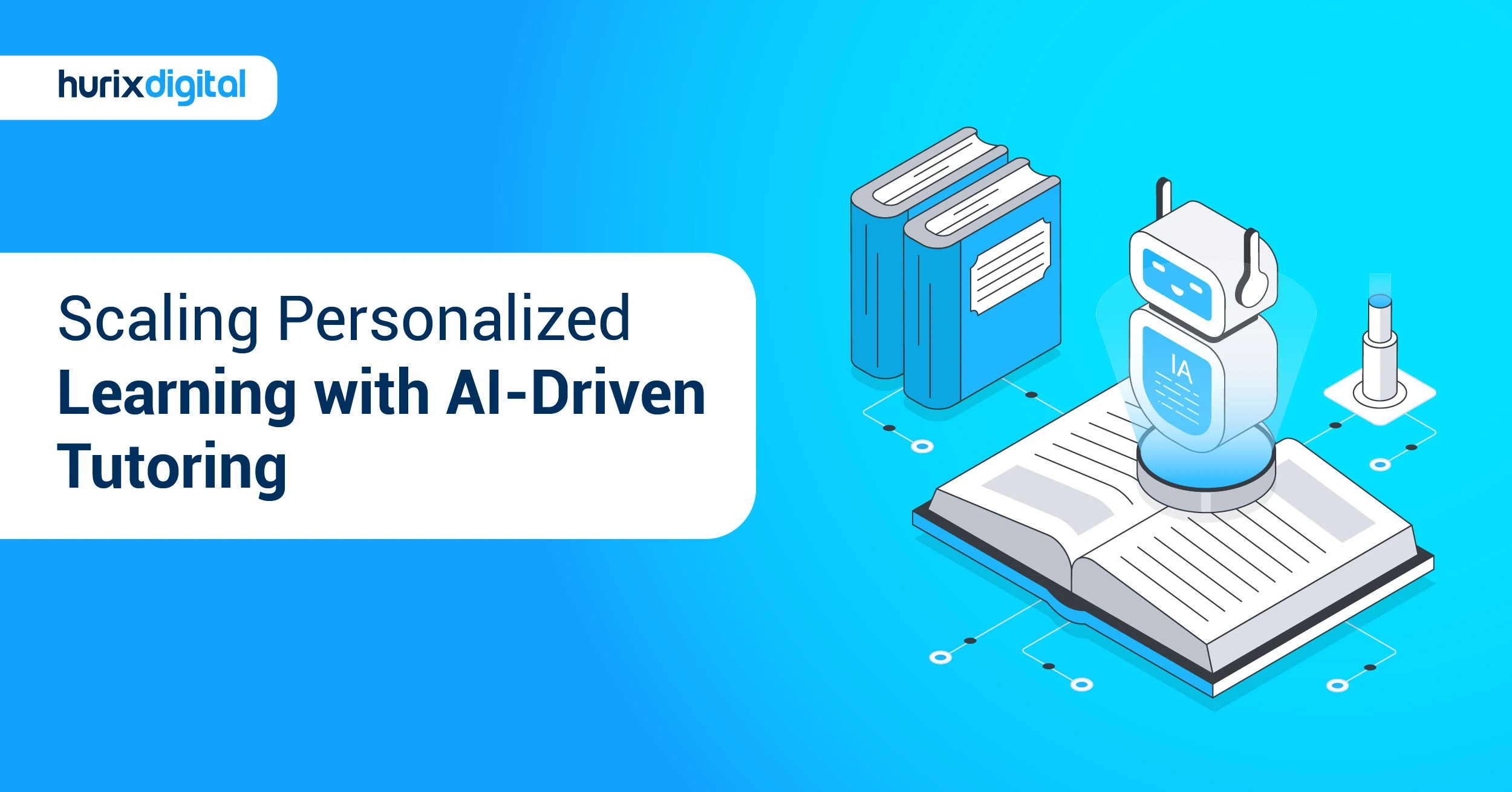
A 5-Step Guide for Effective Courseware Development
The education industry is experiencing a major paradigm shift. Traditional modes of delivering content, which generally involve an instructor teaching learners in a unidimensional, classroom-based setting, are being replaced by a variety of digitally powered, innovative, and informative techniques. At the heart of this transformation lies courseware development, which enables the creation of structured, interactive, and engaging digital learning materials. As a result, the modern pedagogic landscape has been forever transformed.
However, digital designs have brought both opportunities and challenges. On the one hand, they empower educational institutions to contextualize knowledge, streamline competencies, and enhance reach. On the other hand, they make it extremely difficult for instructors to retain a student’s perpetual attention. To address this obstacle, institutions—especially those in higher education—have devised a simple, credible, and distinctive solution: courseware development.
Table of Contents:
- What is Courseware Development?
- Courseware vs Traditional Course Materials
- 5 Steps for Courseware Development:
- Leveraging Technology for Enhanced Courseware Development
- Advanced Techniques for Enhanced Engagement
- Strategies for Easy Courseware Deployment
What is Courseware Development?
Courseware development refers to the process of designing, creating, and delivering structured educational content or learning materials for digital or classroom-based training. It includes defining learning objectives, organizing modules, incorporating multimedia, and aligning with instructional strategies to ensure effective knowledge transfer and learner engagement.
Courseware is usually developed as a group of packets or kits that can either be used as tailor-made tutorials for educators or as independent lessons for learners. Regardless of which type of courseware you choose, courseware allows you to enhance access and improve productivity while meeting all your students’ specific needs and requirements.
Therefore, if you are a higher education institution and intend to reap the benefits of courseware development, this blog highlights five crucial steps that can guide you through this process.
Also Read: Importance of Digital Curriculum Development in Higher Education
Courseware vs Traditional Course Materials
| Feature | Courseware | Traditional Materials |
|---|---|---|
| Format | Digital/interactive | Textbooks/paper-based |
| Delivery | LMS/Online | Classroom/manual |
| Customization | High | Limited |
| Assessment Integration | Yes | Often separate |
5 Steps for Courseware Development:
1. Know Your Learners
The first step in developing effective courseware is thoroughly understanding your potential learners. Determine how to develop courseware and who you are developing it for. Ascertain your audience’s basic characteristics by conducting detailed surveys, sponsoring panel studies, and building interview-based profiles.
This will give you a fundamental idea of what elements/areas of knowledge your learners need to polish, and it will also acquaint you with the essential skill sets your learners expect to acquire. Based on this, you can develop a comprehensive digital curriculum where you can provide academic value, meet specific objectives, and enhance the learning experience.
2. Develop an Outline
Once you have determined who you are creating the courseware for, the next step entails developing a meticulous and methodical outline. Start by making a list of all the major fields that you believe your digital course must cover. Now, divide this list into smaller, in-depth topics, which can be classified under specific headings and specialized modules.
Plan the tiniest details, such as word count, slide numbers, media integration, and other interactive instructions, if any, in advance. Remember to keep an eye on the basic objectives you had in mind. Creating this outline will enable you to prepare an elaborate road map that will guide you through the terrain of courseware development.
3. Use Different Activities
It is a well-known fact that every learner learns differently. While some people respond better to audiovisual presentations and graphics, many others are better served by simulations and games. This is why it is considered wise to integrate different activities in a single course so that your learners can absorb more knowledge.
However, using a variety of activities addresses just one part of the problem. The other part is ensuring that the information provided is retained for a long time. To do this, make sure that the courses you create are kept in bite-sized, digestible forms. Using any needless content will only create a feeling of cognitive overload.
4. Get Creative with Assessments
One of the principal features you need to plan while undertaking the courseware development process is assessment and feedback. Unlike the conventional method, you don’t have to place assessments at the end of your module. Instead, you can strategically locate them after each chapter so that they can help your learners review key concepts.
Furthermore, you can get quite creative with your assessment and feedback procedure by using innovative formats like questionnaires, essays, multiple-choice questions, etc.
5. Offer Real Value
Last but not least, courseware development, throughout its run, should offer real value. Find out the best way to tie your course’s subject matter to the real-world context so that your learners know what benefits they can reap from the course. Give practical examples and co-relate each aspect of the course with experience.
Leveraging Technology for Enhanced Courseware Development
The incorporation of cutting-edge technologies has become a cornerstone in developing impactful courseware. These tools revolutionize the learning process and cater to the evolving needs of students and educators alike. By thoughtfully integrating instructional design principles and adopting innovative strategies, institutions can foster a learning environment that is engaging, inclusive, and future-ready. Here’s how technology can amplify courseware development:
- Personalized Learning: Personalization is a game-changer in digital education. By leveraging data analytics, institutions can understand learners’ preferences, learning speeds, and areas for improvement. This enables the creation of tailored content that addresses individual needs, ensuring each learner gets a customized experience.
- Interactive Learning Modules: Rich multimedia elements, such as videos, infographics, animations, and quizzes, contribute to Interactive Learning experiences. These modules encourage active participation and ensure better knowledge retention and application.
- Blended Learning Approach: Blended learning is defined as combining traditional classroom settings with digital solutions. This hybrid model optimizes the advantages of face-to-face interactions and online resources, offering a balanced and dynamic learning journey.
Advanced Techniques for Enhanced Engagement
- Microlearning: A hallmark of microlearning is delivering content in small, digestible chunks. This approach helps combat information overload and aligns with the modern learner’s shorter attention span.
- Competency-Based Education: A focus on skill acquisition over time spent in a classroom underpins Competency-Based Education. Learners progress at their own pace, mastering key skills before moving to the next topic.
- Digital Curriculum: A well-structured Digital Curriculum acts as a comprehensive guide for both learners and educators, encompassing diverse modules and resources for seamless navigation.
Strategies for Easy Courseware Deployment
Here are some effective strategies for easy courseware deployment.
- Assessment Strategies: Modern Assessment Strategies go beyond traditional tests. Educators can monitor progress effectively by integrating real-time analytics, peer reviews, and interactive assessments and make informed decisions to refine their courses.
- Simulations and Virtual Reality (VR): Utilizing VR and simulations offers immersive experiences that mimic real-world scenarios. These tools provide learners with hands-on practice in a risk-free environment, enhancing their confidence and understanding.
- Automation in Instructional Design: Automation tools in Instructional Design streamline repetitive tasks like content curation, feedback generation, and tracking progress. This enables educators to focus on creating meaningful content that drives learner success.
Also Read: How to Choose the Right Online Assessment Services for Higher Education?
The Way Forward
You can use many activities, such as branching scenarios, gamification, stories, and simulations. Let your learners use the course to make risk-free decisions and learn from the consequences of their actions. Inculcating such value into your course creation process will equip you and your learners to make credible and informed learning decisions.
As times change, the higher education sector will start to bear true witness to the transformational power of technology. Be it customized curriculum, cognitive instructions, targeted designs, or expert faculty, the world of pedagogy, coupled with a hint of digitization, will undergo a significant change. This will lead to an extensive increase in professional courseware development, aiming to create dynamic, interactive, trackable, and immersive learning methodologies.
Even in the future, this rise of digital education will continue unabated. It will likely surpass the mark of $243 billion by 2022, thus making the discipline of eLearning much more accessible, resourceful, and efficient. As a result, almost 66% of higher educational institutions will begin to embark on their digital journey by the end of the decade. In such a scenario, the only way for institutions to face competition without laying any stress on their capital or budget would be by creating virtual learning experiences that are both focused and personalized.
As a trusted partner in transforming education, Hurix Digital stands at the forefront of innovation in courseware development. Renowned for blending creativity with technology, they craft solutions that embody Personalized Learning, Gamification, and Competency-Based Education, ensuring learners stay engaged and empowered. With a deep understanding of Instructional Design and Interactive Learning, Hurix Digital delivers scalable, intuitive, and impactful experiences tailored to the unique needs of institutions and educators.

Senior Vice President
A Business Development professional with >20 years of experience with strong capability to sell new solutions and develop new markets from scratch. New Market Entry Specialist with experience working in the largest emerging markets. Exceptional experience in conceptualizing, ideating and selling new learning technologies like VR AR, etc. across multiple industry verticals.






